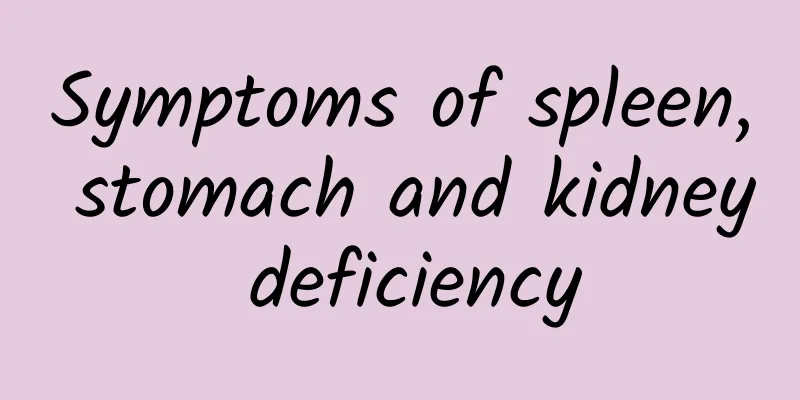What is acute epiglottitis? What are the clinical symptoms?

|
Acute epiglottitis, also known as supraglottic laryngitis or preepiglottic pharyngitis, is a special, acute inflammatory disease characterized by severe edema of the epiglottis. So what is acute epiglottitis? Clinical manifestations: Both adults and children can be affected. It is more common in adults in China. Acute epiglottitis can occur throughout the year, but is more common in winter and spring. Acute epiglottitis has an abrupt onset and progresses very rapidly. The main symptoms include severe sore throat, difficulty swallowing, and difficulty breathing. 1. Systemic symptoms: Mild cases have no obvious systemic symptoms, while severe cases often have fever and chills, with body temperature between 38℃ and 39℃, and a few may be as high as 40℃ or above. In addition, there are symptoms such as headache, fatigue, general discomfort, and loss of appetite. Physical examination revealed an acute appearance. Children and elderly patients often have more obvious systemic symptoms and the disease progresses rapidly. Children may rapidly develop exhaustion, manifested by mental depression, physical weakness, cold limbs, pale complexion, rapid and thin pulse, low blood pressure, and even fainting and shock. 2. Local symptoms (1) Except for infants who cannot complain of throat pain, most patients have severe and progressively worsening throat pain, accompanied by obvious pain when swallowing. Sometimes twisting the neck can cause severe pain in the throat. (2) Dysphagia: Severe swallowing pain and swelling of the epiglottis seriously affect the swallowing function, and even saliva is difficult to swallow. Severe cases often choke and cough when drinking water and drool. In mild cases, patients may feel a foreign body sensation in the throat. Occasionally, there is difficulty in opening the mouth. (3) Slurred pronunciation: Due to the swelling of the epiglottis, patients often have a feeling of throat obstruction and unclear speech. The vocal cords are usually spared, and hoarseness is rare. 3. Respiratory distress usually occurs within 24 hours of onset. When the epiglottis is highly swollen, the glottis becomes smaller, and is blocked by phlegm, inspiratory dyspnea occurs, accompanied by inspiratory laryngitis. In severe cases, respiratory distress occurs early and progresses rapidly, and can cause suffocation within a few hours. Dyspnea may manifest in a special body position when breathing, generally a forward leaning position. In children, it may manifest in a sniffing position, that is, the body leans forward with the head and nose stretched forward and upward, as if smelling a scent. In addition, the patient is more agitated and cannot calm down; his breathing rhythm becomes shallower and faster, and the three-depression sign may appear, that is, the suprasternal fossa, supraclavicular fossa, and intercostal spaces are obviously sunken during breathing. Diagnosis: For patients who complain of acute throat pain and have no obvious changes in the oropharyngeal mucosa and tonsils, the possibility of acute epiglottitis should be considered, and indirect laryngoscopy can usually confirm the diagnosis. Laboratory tests and imaging examinations are not necessary for diagnosis. If the diagnosis is clear, they should be omitted as much as possible to avoid delaying treatment and rescue. Treatment: Acute epiglottitis is a serious and acute laryngological disease. Patients with acute severe sore throat or any symptoms suggesting breathing difficulties and suspected acute epiglottitis should go to the hospital immediately. Patients with acute epiglottitis who have been ill for less than 24 hours need to stay in the hospital for observation, closely monitor respiratory changes, and be prepared to establish an artificial airway while receiving drug treatment. Treatment principles include maintaining airway patency and controlling infection. Prognosis: Patients with acute epiglottitis generally have a very good prognosis after timely treatment, and most patients can be cured. However, if the patient does not come to the hospital for treatment in time and the disease is delayed, the prognosis will be poor, and in severe cases it may lead to death. Prevention: To prevent the occurrence of acute epiglottitis, you should strengthen exercise and enhance the body's resistance. Acute inflammation of organs adjacent to the epiglottis requires timely treatment to prevent the spread of infection. Maintain oral hygiene, quit smoking and drinking, and eat less spicy food. Diabetic patients should pay attention to controlling blood sugar. Children can be given the Haemophilus influenzae type b vaccine to prevent infection from this pathogen. Injection is not recommended for adults, except in special groups with weakened immunity, such as those with sickle cell anemia, post-splenectomy, tumors, and other conditions that affect immune function. |
<<: What to drink for pharyngitis? What tea is effective for pharyngitis?
>>: What's the quickest way to reduce internal heat? What is the best way to reduce fever?
Recommend
Can I drink Chinese medicine at noon?
Although Chinese medicine is relatively slow in r...
Precautions after rabies vaccination
Now our living standards are constantly improving...
The efficacy, effects and contraindications of whitehead
I believe many people have heard of the Chinese h...
What to do if your lips are chapped and itchy? 7 tips to treat chapped lips
Many people are prone to chapped and itchy lips w...
Can I drink ginger water every day?
Nowadays, many people prefer to drink ginger soak...
No matter how good the medicine is, it is not as good as these methods
In daily life, many men hope to be virile, have a...
What should you pay attention to when cupping on the head?
The head is one of the most important parts of th...
What are the effects and functions of duckweed?
You can pay more attention to and learn more abou...
Why do I always feel bitter in my mouth?
Sometimes when we wake up in the morning, we feel...
Antidote for Gelsemium elegans
Gelsemium elegans is not an alias for a particula...
The efficacy and function of sweet potato leaves
I believe everyone has eaten sweet potatoes, and ...
What happens if you take too much anesthesia?
Generally speaking, there will not be a situation...
What is the cause of nipple water
Nipple oozing is mainly caused by milk engorgemen...
What to do if you only fart but not poop
Many people's stomachs are not very healthy, ...
What are the effects and functions of Alisma?
When people are sick or conditioning their bodies...









